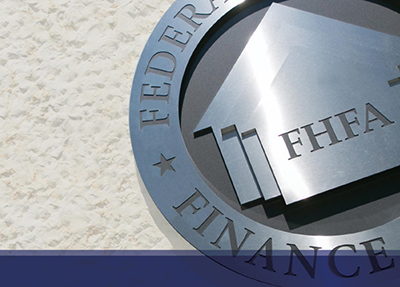
FHFA Releases Fannie Mae, Freddie Mac Stress Tests

The Federal Housing Finance Agency on Thursday released the results of its Fannie Mae and Freddie Mac Dodd-Frank Act Stress Tests.
FHFA requires Fannie Mae and Freddie Mac to conduct annual stress tests to determine whether the companies have the capital necessary to absorb losses resulting from severely adverse economic conditions.
The latest test is the ninth implementation of the Dodd-Frank Act Stress Tests (DFAST) for the Enterprises.
FHFA said the 2023 DFAST Severely Adverse scenario is characterized by a severe global recession accompanied by stressed residential and commercial real estate as well as corporate debt markets. “The scenario is not a forecast, but instead is a hypothetical future economic environment designed to assess the strength of the Enterprises and other financial institutions and their resilience to unfavorable market conditions,” the report said.
The 2023 DFAST Severely Adverse scenario assumed U.S. real GDP would decline by nearly 8.75 percent from fourth-quarter 2022, reaching a trough in the first quarter of 2024 before recovering. It assumed the unemployment rate would increase by about 6.5 percentage points, reaching a peak of 10 percent in the third quarter of 2024 and the annualized consumer price index inflation rate would fall to about 1.25 percent in the third quarter of 2023 and then gradually rise to above 1.5 percent by the end of the planning horizon.
The DFAST test also assumed the three-month Treasury rate falls to near zero by the third quarter of 2023 and remains there throughout the planning horizon and the 10-year Treasury yield falls by nearly 3.25 percentage points by the second quarter of 2023 and then gradually increases beginning in late 2023 to about 1.5 percent by the end of the planning horizon. “The interest rate paths specified in the scenario imply that the yield curve remains inverted through the second quarter of 2023,” FHFA said. “Beginning in mid-2023, the slope of the yield curve becomes positive and steepens over the remainder of the planning horizon.”
The FHFA report said without establishing a valuation allowance on Deferred Tax Assets, both Enterprises reported comprehensive income in the severely adverse scenario. “Key drivers were portfolio growth and house price appreciation in 2022, partially offset by a more severe house price decline in the 2023 planning horizon.”
“However, with establishing a valuation allowance on Deferred Tax Assets, both Enterprises recognize comprehensive losses,” FHFA said. “The provision for credit losses was the largest expense at both Enterprises.”
The report said the second-largest expense at Fannie Mae was mark-to-market losses. The second-largest expense at Freddie Mac was the global market shock impact, including the counterparty default scenario component.
